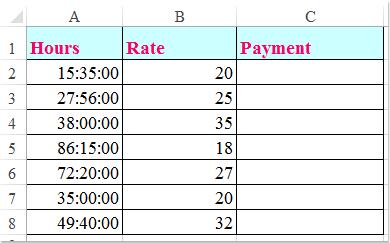

If your starting points contain only time values without dates, you need to use the TIME function to calculate the elapsed time correctly. In case the elapsed time exceeds 24 hours, use one of these time formats, for example d "days" h:mm:ss like in the following screenshot: Supposing that the beginning date and time is in call A2, the formula =NOW()-A2 returns the following results, provided you've applied an appropriate time format to column B, h:mm in this example: In order to calculate how much time has elapsed since the start time to now, you simply use the NOW function to return today's date and the current time, and then subtract the start date and time from it. Calculate elapsed time from a start time to now the result of the formula is a negative number), the #NUM! error is returned. If the end time is less than the start time (i.e. The elapsed time is displayed differently depending on the time format applied to the column: With Start times residing in column A and End times in column B, you can copy the following formula in columns C though E: Please see Creating a custom time format in Excel for the detailed steps.Īnd now, let's see how our time difference formula and time codes work in real worksheets. To apply the custom time format, click Ctrl + 1 to open the Format Cells dialog, select Custom from the Category list and type the time codes in the Type box. To make them more informative, you can apply custom time formatting with one of the following codes: Time codeĮlapsed hours and minutes, display as 4:10.Įlapsed hours, minutes and seconds, display as 4:10:20. The decimals in column D are perfectly true but not very meaningful. Remembering that in the internal Excel system, times are represented by fractional parts of decimal numbers, you are likely to get the results similar to this: =TIME(HOUR(A2), MINUTE(A2), SECOND(A2)) - TIME(HOUR(B2), MINUTE(B2), SECOND(B2))Ĭalculates the time difference between values in cells A2 and B2 ignoring the date difference, when the cells contain both the date and time values. =TIMEVALUE("8:30 PM") - TIMEVALUE("6:40 AM")Ĭalculates the difference between the specified times. So, let's run through all methods, one at a time.ĭepending on you data structure, the actual time difference formula may take various shapes, for example: FormulaĬalculates the difference between the time values in cells A2 and B2.

Which one to choose depends on your dataset and exactly what result you are trying to achieve. And as is often the case, there is more than one formula to perform time calculations. find the difference between a beginning time and an ending time. To begin with, let's see how you can quickly calculate elapsed time in Excel, i.e.
Timecode calculator excel how to#
How to calculate time difference in Excel (elapsed time)



 0 kommentar(er)
0 kommentar(er)
